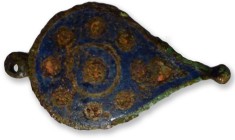What is Grey About the ‘Grey Market’ in Antiquities
Mackenzie, S. and Yates, D. (2016) ‘What is Grey about the “Grey Market” in Antiquities’, in Beckert, J. and Dewey, M. (eds) The Architecture of Illegal Markets: Towards an Economic Sociology of Illegality in the Economy. Oxford: Oxford University Press.
The global market in antiquities has been described as a ‘grey market’ in discussions by various commentators of the problem of illicit cultural property. In this contribution, we set out to interrogate that terminology, ultimately providing (we hope) a definitive breakdown of the meanings and implications of the idea of ‘greyness’ as it applies to this particular illicit market. As we shall see, the term ‘grey market’ has been rather liberally applied by researchers working on illicit markets in cultural objects, and is in danger of becoming a generic but unrefined synonym for the interface between certain illicit practices in excavation and the public antiquities trade. It would seem helpful therefore at this point in the development of the research evidence base on illicit antiquities – and particularly in the context of the theme and other contributions in this book – to pause and reflect on what we mean when we observe greyness in this market.
